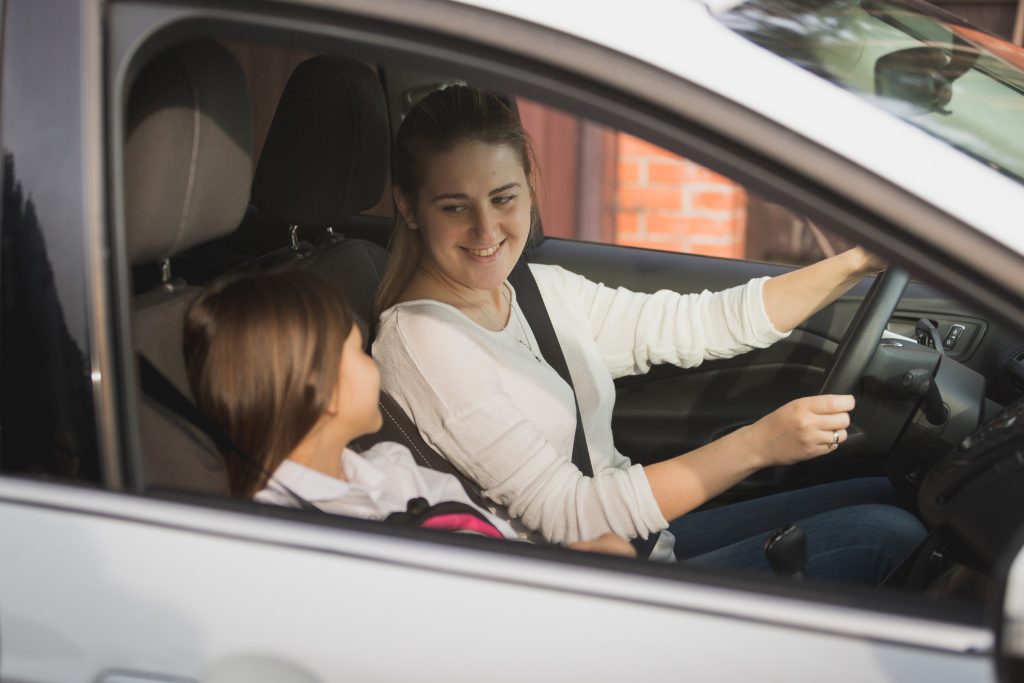
It’s a familiar scene: the family dinner table filled with awkward silences, distracted glances, and maybe a minor meltdown over vegetables. But toss those same family members into a car, and suddenly, conversations start flowing—questions get answered, stories are shared, and even teenagers open up. Why does a quick drive to soccer practice spark a more meaningful connection than a home-cooked meal at the table? The answer might have less to do with the food and more to do with how raising kids in today’s world fits into busy lifestyles. The car isn’t just transportation anymore—it’s often where real connection happens.
In a world where raising kids is increasingly shaped by packed schedules and digital distractions, the car has quietly become one of the last low-pressure zones in a child’s day. There’s something about being side by side instead of face to face that relaxes defenses and invites honesty. Kids don’t feel grilled, judged, or rushed when they’re just along for the ride. Below are eight reasons the backseat wins over the front seat more often than parents expect.
1. No Direct Eye Contact
It sounds simple, but avoiding direct eye contact makes discussing tough topics easier. At the dinner table, eye contact can feel intense, like a spotlight is suddenly on your child. In the car, everyone faces forward, and that physical setup can lower pressure and reduce social anxiety. Raising kids often requires knowing when to lean in and when to give space. The car naturally creates a safer space for emotional expression.
2. Limited Distractions
At home, there’s noise from the TV, phones buzzing, pets begging for scraps, and siblings interrupting. The dinner table is supposed to be a calm, connecting moment, but it often turns into chaos. On the other hand, the car has a built-in simplicity: limited distractions and fewer moving parts. No one’s multitasking or jumping up to grab something from the fridge. That quiet structure helps kids feel more present and heard.
3. Short Bursts of Time
Long dinners can feel like a commitment, especially to younger kids or teens who’d rather be elsewhere. A car ride, though? It has a clear beginning and end, and that predictability works in its favor. It’s a low-effort setting for a high-value check-in. Raising kids doesn’t require long-winded conversations—just consistent, thoughtful moments of connection.
4. Passive Engagement Feels Safer
When kids are doing something with their hands—looking out the window, fidgeting with a hoodie string, or scrolling quietly—they tend to talk more freely. The car provides just enough background activity to make conversation feel casual rather than confrontational. Unlike the dinner table, where everyone’s focused on each other, the car offers the comfort of partial attention. That makes kids more likely to voice what’s really on their minds. Passive engagement often leads to active communication.
5. Built-In Routine
Car time happens regularly and predictably—school drop-offs, grocery runs, practice pickups. That consistency creates built-in opportunities to talk without scheduling a “heart-to-heart.” Over time, these moments add up to real connection. Raising kids benefits from everyday rituals, and the car ride becomes one of them without anyone realizing it. It’s a dependable touchpoint in an otherwise busy and unpredictable day.
6. Music and Mood Boosting
Let’s face it: dinner rarely starts with everyone’s favorite playlist. But in the car, kids can take turns picking songs, and that can instantly set a positive, relaxed tone. Music opens the door to laughter, shared tastes, and even deep convos sparked by a favorite lyric. It’s an emotional icebreaker that makes everyone feel more at ease. When the mood is right, kids are more likely to talk, joke, and connect.
7. Less Pressure to “Perform”
Dinner can unintentionally feel like a job interview. “How was school?” “Did you finish your homework?” “Why aren’t you eating your vegetables?” Even with the best intentions, parents can come across as demanding. In the car, those expectations fade. There’s no pressure to sit up straight, finish food, or respond immediately—just an easy rhythm that makes room for more authentic exchanges.
8. It’s a Break from Everything Else
The car is a weirdly magical pause button in the middle of busy family life. It’s a place where kids aren’t expected to be productive, entertaining, or even particularly cheerful. They can just be—grumpy, chatty, sleepy, silly—and that authenticity invites real connection. With raising kids often focused on goals and structure, the car offers a moment where nothing is expected except presence. That’s something kids crave more than we realize.
Why Connection Sometimes Starts in the Fast Lane
Parents spend so much time trying to build meaningful moments at the dinner table that it’s easy to overlook the everyday spaces where connection is already happening. The car may not look like quality time, but for many families, it functions as an emotional bridge—casual, comfortable, and surprisingly deep. Embracing those moments, instead of trying to recreate them in a more “traditional” setting, is one of the smartest shifts parents can make when raising kids today. After all, it’s not about where the conversation happens—it’s that it happens at all.
What are some of the best or funniest conversations with your kids in the car? Share your story in the comments!
Read More:
8 Reasons Your Kids Prefer Being at Daycare More Than Home
8 Reasons Your Kids Prefer School Lunches to What You Pack
Catherine is a tech-savvy writer who has focused on the personal finance space for more than eight years. She has a Bachelor’s in Information Technology and enjoys showcasing how tech can simplify everyday personal finance tasks like budgeting, spending tracking, and planning for the future. Additionally, she’s explored the ins and outs of the world of side hustles and loves to share what she’s learned along the way. When she’s not working, you can find her relaxing at home in the Pacific Northwest with her two cats or enjoying a cup of coffee at her neighborhood cafe.
Leave a Reply